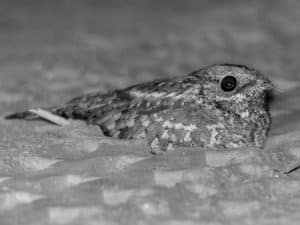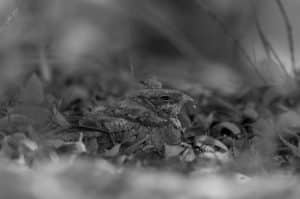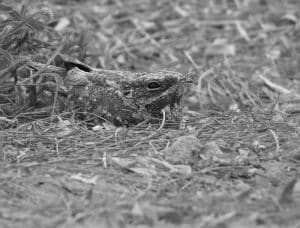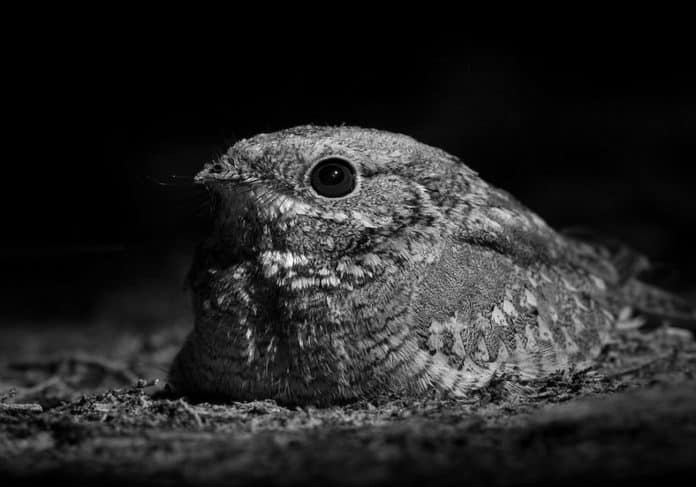Introduction to Tanzanian nocturnal birds
Tanzania is not only a haven for wildlife enthusiasts but also a paradise for birdwatchers. While many are familiar with the country’s diurnal bird species, the nocturnal birds of Tanzania remain shrouded in mystery. In this article, we will focus on one particular enigmatic species – the Nubian Nightjar in Tanzania. Join us as we delve into the fascinating world of Tanzanian nocturnal birds and uncover the secrets of this elusive creature.
The Nubian Nightjar: A mysterious and elusive species

The Nubian Nightjar (Caprimulgus nubicus) is a stunning bird that belongs to the Caprimulgidae family. With its cryptic plumage and nocturnal habits, it is often overlooked by casual observers. However, those lucky enough to spot this bird are captivated by its unique beauty and mysterious nature.
This medium-sized nightjar is characterized by its mottled brown and gray feathers, which provide excellent camouflage against the rocky landscapes it inhabits. The Nubian Nightjar also possesses large, dark eyes for enhanced night vision and a wide gape to catch its prey on the wing. Its distinctive call, a haunting churring sound that echoes through the night, adds to its allure.
Habitat and distribution of the Nubian Nightjar in Tanzania
The Nubian Nightjar is primarily found in the arid and semi-arid regions of Tanzania. It favors dry savannas, rocky terrains, and acacia woodlands, where it can blend seamlessly with its surroundings. This bird has a wide distribution, occurring in several areas across the country, including Serengeti National Park, Tarangire National Park, and Selous Game Reserve.
Although the Nubian Nightjar is a resident breeder in Tanzania, it is known to make local movements in response to changing weather patterns and food availability. These movements can be challenging to track, further adding to the bird’s elusive nature.
Behavior and characteristics of the Nubian Nightjar
As a nocturnal bird, the Nubian Nightjar displays unique behaviors adapted to its nighttime lifestyle. It is primarily crepuscular, meaning it is most active during dawn and dusk. During these periods, the Nubian Nightjar emerges from its roosting sites to forage for insects, its main source of food.
The Nubian Nightjar has exceptional aerial agility, allowing it to catch insects in mid-flight. Its long wings and short legs contribute to its impressive maneuverability, making it a skilled hunter in the darkness. This bird also relies on its exceptional camouflage to remain hidden during the day, roosting on the ground or perching on tree branches.
Breeding and nesting habits of the Nubian Nightjar
Breeding season for the Nubian Nightjar typically occurs between November and April in Tanzania. During this time, males perform elaborate courtship displays to attract females. These displays involve fluttering flights, wing clapping, and vocalizations. Once a pair is formed, they engage in a unique behavior known as “wing-clapping duet,” where both birds rhythmically clap their wings together.
Nesting sites for the Nubian Nightjar are typically located on the ground, often in open areas with sparse vegetation. The female lays one or two eggs, which are incubated by both parents for approximately 20-25 days. The chicks hatch with downy feathers and are cared for by their parents until they fledge at around 20 days old.
Challenges faced in studying the Nubian Nightjar

Studying the Nubian Nightjar poses several challenges due to its secretive nature and nocturnal habits. Researchers often struggle to locate and observe individuals during the day, as they are well-hidden and inactive. Additionally, the Nubian Nightjar’s reliance on camouflage makes it challenging to spot in its natural habitat, even during the twilight hours.
Limited knowledge about the Nubian Nightjar’s migration patterns and specific habitat requirements also hampers conservation efforts. Understanding these aspects is crucial for effectively protecting this species and its habitats in Tanzania.
Conservation efforts for the Nubian Nightjar in Tanzania
Recognizing the importance of preserving Tanzania’s nocturnal birds, including the Nubian Nightjar, conservation organizations and local authorities have initiated various efforts. These include habitat preservation, raising awareness among local communities, and promoting responsible ecotourism practices.
Conservationists are also working on gathering more data on the Nubian Nightjar’s population size and distribution to inform targeted conservation actions. This involves conducting surveys and engaging citizen scientists and birdwatchers to report sightings, contributing to a better understanding of this elusive species.
Tips for birdwatching and identifying the Nubian Nightjar
If you’re eager to catch a glimpse of the Nubian Nightjar during your visit to Tanzania, there are a few tips to keep in mind. Firstly, ensure you plan your birdwatching activities during the early morning or late afternoon, as this is when the Nubian Nightjar is most active. Look for open areas with rocky outcrops or sparse vegetation, where it is more likely to be found.
Listen for the Nubian Nightjar’s distinctive churring call, which can help guide you to its location. Be patient and observant, as this bird can be challenging to spot due to its excellent camouflage. Finally, respect the bird’s habitat and avoid disturbing nesting or roosting sites.
Other nocturnal bird species in Tanzania
While the Nubian Nightjar takes center stage in this article, Tanzania is also home to several other captivating nocturnal bird species. These include the African Scops Owl, Freckled Nightjar, and Square-tailed Nightjar, each with its own unique characteristics and behaviors. Exploring the nocturnal avian diversity of Tanzania is a rewarding experience that deepens our understanding of the country’s rich biodiversity.
Conclusion: Appreciating the beauty and importance of Tanzanian nocturnal birds

As we conclude our journey into the world of Tanzanian nocturnal birds, we hope you have gained a newfound appreciation for these elusive creatures. The Nubian Nightjar, with its mysterious nature and captivating beauty, serves as a reminder of the intricate web of life that exists in Tanzania’s diverse ecosystems. By understanding and preserving these nocturnal birds, we contribute to the overall conservation of Tanzania’s natural heritage for generations to come.

































